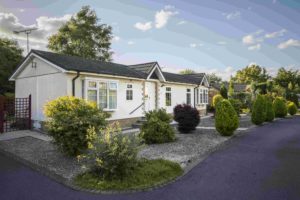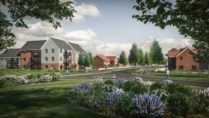Park homes could help solve the housing crisis
Park Homes are becoming increasingly popular. According to the House of Commons Library there are 85,000 park homes on 2,000 licensed sites across the country. Despite their popularity, almost no councils make provision for park homes in their local plans. This despite them being an acceptable form of development in the countryside and outside settlement boundaries, very deliverable, sustainable and affordable. More park homes would contribute to the housing supply numbers and make a valuable contribution to addressing the housing crisis. They will also increase diversity and choice of housing options in the market and provide specialist housing for older people.
Park homes, or mobile homes as they are also known, are modern, bungalow-style detached homes. Occupiers enjoy all the usual amenities, such as gardens, sheds and patios, as well as paying council tax. But they are certainly different in terms of planning; in terms of the local plan process, the planning system itself and the approach to Permitted Development (PD) rights.
Park homes offer an opportunity for independent edge of settlement or even rural living. For example, Warfield Park, one of the largest park home sites in the country, is outside the settlement boundary of Bracknell and technically located in the countryside. Park homes count towards the housing supply numbers and help address the housing shortage, including releasing larger family homes back on to the market as people downsize.
In addition, sites for park homes can be developed more quickly than traditional homes and so can contribute to the crisis faster. This is because they are manufactured in factories and then transported to site. Off-site construction also improves build quality and sustainability.
Although park homes are largely open for anyone to buy, such a provision also provides an opportunity for councils to provide specialist housing for older people. This type of housing is rarely included within local plans. The over 55s is now the largest portion of the population but very little is being done to provide them with viable and attractive housing options which they want to move to. This means they tend to remain in their family homes, which itself restricts the market as those family homes are desperately needed by younger families. They, in turn, cannot move, which restricts their smaller homes from coming back on the market for first time buyers.
Councils are missing fundamental opportunities by not including park homes in their local plans. Apart from numbers, they would increase the choice of accommodation in the housing market, and a valuable addition to the housing numbers. They also provide the opportunity for housing for older people, releasing more family homes back onto the market increasing mobility.

Strategic land and site promotion
“Chelgate gives a real insight into political thinking at all levels and all political persuasions, …

Energy and infrastructure
From new nuclear and unconventional gas to renewables, waste and airports, our team has worked …


